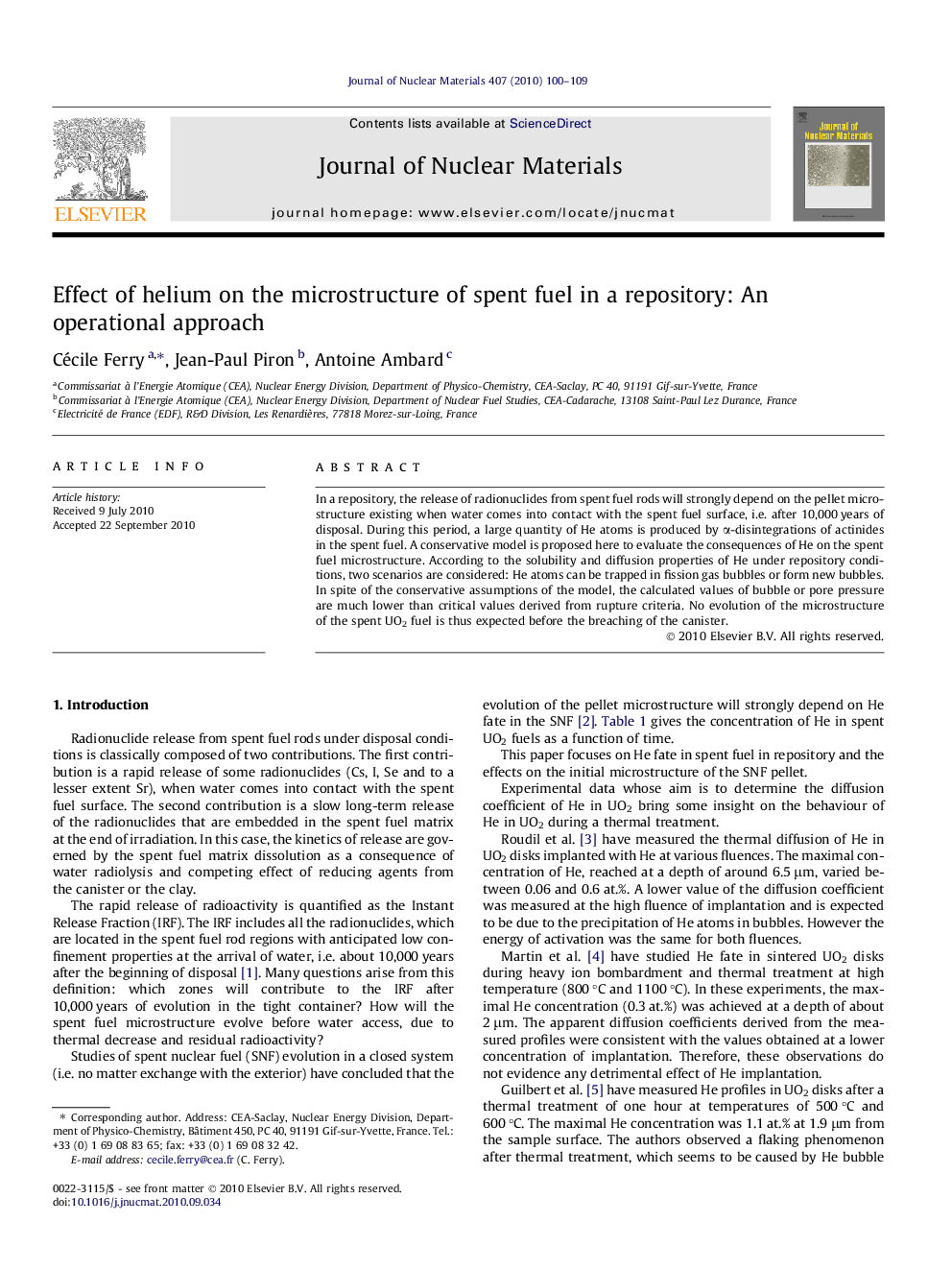| Article ID | Journal | Published Year | Pages | File Type |
|---|---|---|---|---|
| 1567247 | Journal of Nuclear Materials | 2010 | 10 Pages |
In a repository, the release of radionuclides from spent fuel rods will strongly depend on the pellet microstructure existing when water comes into contact with the spent fuel surface, i.e. after 10,000 years of disposal. During this period, a large quantity of He atoms is produced by α-disintegrations of actinides in the spent fuel. A conservative model is proposed here to evaluate the consequences of He on the spent fuel microstructure. According to the solubility and diffusion properties of He under repository conditions, two scenarios are considered: He atoms can be trapped in fission gas bubbles or form new bubbles. In spite of the conservative assumptions of the model, the calculated values of bubble or pore pressure are much lower than critical values derived from rupture criteria. No evolution of the microstructure of the spent UO2 fuel is thus expected before the breaching of the canister.
